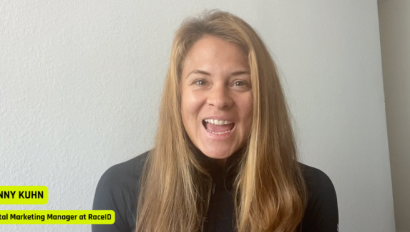How to Collect, Analyze, and Use Race Participant Feedback Surveys

Participant surveys help you to gain essential insights about your events key strong points, areas of improvement, foster and give direction on how to align your event. In this article, we give you the what’s, whys and hows regarding participant surveys and how you can use the insights to excel.
Why Should I Get Feedback From my Participants?
Asking participants for feedback may be a daunting task and the easiest thing to do is to simply not do it. However, getting feedback is a really important part of your participant experience. Here are five reasons why you should ask your participants to share their thoughts with you.
- Give your participants a way to give positive and constructive feedback
- Identify areas for improvement
The most obvious reason for collecting feedback is to improve. Get participants to share what you as an organization can do better. - Show your participants that you car
Simply by showing that you want feedback you also show your participants that their voice matters. By listening to the participants you will also create loyalty and be able to create dialogues as necessary and meet both positive and negative feedback. - Collect additional interesting data about your participants
- Acquire shareable content
“Pure Gold”; what many researchers call open questions where survey participants get to write what they want. This is especially true if you can get quotes or stories you can share in your social media or on your site.
The Six Main Things to Consider When Creating a Participant Survey
There are many things to consider when gathering participant feedback such as which tool or method to use, when to gather the data and which questions to ask. We have identified six things to consider that will make your survey successful. By addressing all these points you will ensure that your participant survey is not only meaningful, but it will also allow you to draw valuable conclusions from your participants feedback.
The six things to consider:
- Set goals before you send the survey
- Segment you participants
- Choose the right time to ask for feedback
- Choose your survey solution wisely
- Ask the right type of questions
Open questions
Ask what participants have done rather than what they plan/want to do - Identify and prioritize important feedback
Set Goals For Your Survey
The first thing you need to do before digging into the questions is to set the overall goal and subgoals. By doing this you will get a clear view on what you want to get out of the survey but also disqualify any subjects that are of minor importance.
The major goal with your survey should be the most important thing you want to understand. This can be a high-level goal, but it will help you orientate the direction of the survey.
Example of a good overall goal: Get insights from participants to understand how we perform against our key KPI(s)
In addition to your overall goal is to create subgoals. These goals will help you to ensure that you will not forget to touch on the subjects that you need answers to. The idea with the subgoals is that they can be more specific than the overall goal.
Example of a good subgoal: Find one way to improve the check-in process.
Segment your Participants
Think about your race and distances. You may have different types of participants during your race weekend. By segmenting participants you may want to send different surveys or at least different versions to different people.
For example you may want to ask returning participants what they thought of the course changes versus last year, while at the same time you ask first-time participants if they liked the course and what specific aspect they enjoyed.
When thinking about different segments of your participants, you may want to consider, amongst others:
- Participants in different start groups and/or distances
- Youth races and families
- Recurring vs first time participants
- Local vs traveling participants
The Right Time to Ask for Feedback
Our best practice is to ask for feedback relatively quickly after your race. Not only will participants remember their experience better than if you wait, but they are also more inclined to answer. What we have discovered is that races asking for feedback within a week after the event are more likely to get answers from their participants than races that wait.
One tool that you can use to get more answers is to give participants a limited-time-offer that if they answer the questionnaire within a few days, then they get a discount or a gift.
You can of course also ask participants to answer on-site during the event, but consider that you may be intruding on the participants’ experience of the event. Therefore waiting a day or two may be better overall.

How to Set Up the Feedback Questionnaire and Ask The Right Questions
The first thing you need to have in mind when creating any questionnaire is that your panel will have a very small attention span. Sure, some people love spending time to help, but the general rule is that you need to stick to what will give you the best insight and value. Especially in today’s digital world, people have less time and are more easily distracted. A questionnaire that gives the feeling of being long or too difficult is likely to see more drop offs than a thought through and properly set up form.
- Include a short and to the point introduction to the survey
Describe in just a few sentences the purpose of the survey, how you will use it and if you are going to share any of the data. In general people do not want to share their data with anyone but you, so if you decide to share this with any third party make sure to state this clearly, but also the reason why. The general rule of thumb is to keep this to a maximum of 3-4 short sentences. - Make sure that the survey is clear and simple to complete
As a final step you should review your questionnaire and remove all unnecessary wording or questions. By simplifying and making the questionnaire tidy, you increase the chance of increasing the number of answers you get. - Alternate between open and closed questions
By alternating not just between open and closed questions but also how the participant can enter their responses will make it more fun to answer your questions. - Ask what your participants have done, not what they intend to do
By asking your participants what they have actually done you can learn their true means of behavior. If on the other hand you ask what participants intend to do, then you risk getting answers that include wishful thinking rather than actual behavior. - Make sure to ask about things you can actually fix or improve
By making sure you are addressing things that are in your scope of control, you can also ensure that you can improve. - Ask if you can contact the participant for further questions
Don’t forget to finish off and answer if it is ok to follow up your questions over the phone or mail. This will give you the opportunity to dig deeper into specific feedback or further understand the reasoning behind specific answers. It will also give you a way to address the most concerning answers given by specific participants.
Note: The data collected depends on the type of question
The data you collect will provide different types of information that will trigger different types of actions.
Questions such as closed multiple choice questions will give you an aggregated overview of what the participants in general think. The way to use this data is to see trends in the participants’ opinions. The key here is to never assume that you know the answer to your most important characteristics of your event.
Open questions will give you the reasoning of the participant, and may also be extremely valuable sources of quotes, points of improvement and more. Reading through the open questions will also give you a better total understanding of how the participants have thought when giving you feedback on your closed questions as well.
What to Consider When Choosing an Online Survey Platform
You can choose to gather your feedback through multiple ways, such as an IRL questionnaire, interviews through phone or in meetings, but by far the most cost effective way is to gather data through online surveys. Choosing the right survey tool is not an exact science, but they all have pros and cons for you in your data collection.
At RaceID we have used many tools over the years and here is our top two favorite survey platforms when asking race participants for their opinions:
Google Forms is one of the most widely used tools for gathering information online. The tool is free and very easy to use, and also provides you with the most necessary form options when you create your survey. Google Forms is the perfect tool for those who want to gather information in a dynamic and smart way. The platform offers limited options for branding though, which is why some organizations sometimes look elsewhere.
Survey monkey is one of the most popular tools online for conducting user surveys. Survey Monkey offers several plans and a basic/freemium version with limited options. If you are looking for a versatile platform that can grow alongside you, Survey Monkey can provide exactly this. The platform also offers several ways to brand your survey and also a wide variety of templates that will help you to get set up.

Identify, Prioritize and Action Important Feedback
Once the survey is completed the work with compiling, analyzing and learning starts. This is the fun part, but also the most challenging bit. It is very easy to simply collect the data and not do anything with it.
After gathering your feedback your next step is to identify the feedback that can actually help you to elevate your event. You need to feedback and make an action list whereby you identify the three to five most important things that you can change/enhance in order to improve the race experience for your participants. If you just create a long list of things to change, the risk is that you end up not changing anything. By sticking to three to five things to improve you will increase the likelihood of not just improving on these things, but also that you improve on the most important feedback from your participants.
List of Survey Tools
- Alchemer
- AskNicely
- Crowdisnal
- FreeOnlineSurveys
- Google forms
- Jotform
- Leapsome
- Pointerpro
- Survs
- SurveyLegend
- Surveyplanet
- Surveymonkey
- Survicate
- SurveyLegend
- Surveysparrow
- SurveyMethods
- Typeform
- Unifocus
- VideoAsk
- Qualaroo
- Zoho Survey
Best of luck with your survey making! If you want to see some examples of surveys and the resulting reports we made with participants, relating to general race participation, check out our Participant Preferences Report.


